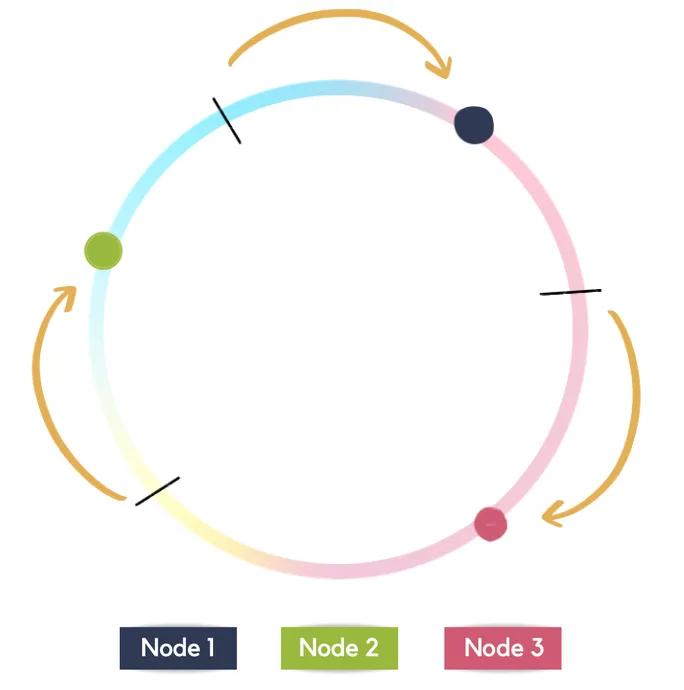Consistent hashing via hash ring is a technique used in distributed computing systems to evenly distribute data and workload across a group of servers, while also minimizing the impact of server failures and additions on the system.
In this technique, servers are arranged in a circular ring, with each server represented by a point on the ring. The ring is typically implemented using a hash function that maps keys to points on the ring. The keys in this context refer to the data or workload that needs to be distributed across the servers.
To assign a key to a server, the hash function is applied to the key to obtain its corresponding point on the ring. The server whose point on the ring is the next highest to the key's point is then responsible for handling that key. If a server fails or is added to the system, only the keys that were previously assigned to that server need to be reassigned to a new server. The other keys remain with their previously assigned server.
By using this technique, the system can achieve good load balancing, as each server is responsible for handling an approximately equal portion of the keys on the ring. Additionally, the impact of server failures and additions is minimized, as only a small portion of the keys need to be reassigned when a server is added or removed.
Overall, consistent hashing via hash ring is a powerful technique for distributing workload and data in distributed systems, and has been widely used in many large-scale systems, such as content delivery networks and distributed databases.

No comments:
Post a Comment